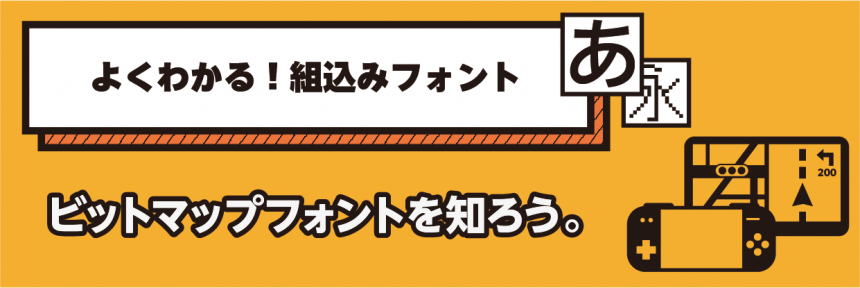
Introduction
"Easy to Understand! Embedded Fonts" is a blog that explains the basics and terminology of embedded fonts. This time, we have compiled an explanation of "bitmap fonts" such as body size and letter size, monochrome and grayscale bitmap fonts, format, and data capacity.
What is a bitmap font?
This is a font that expresses characters (character shapes) as a collection of dots. Because it is originally raster data (bitmap graphics), it does not require rendering processes and has a small data capacity, so it can be used in environments with low resolution (pixels: the smallest unit that makes up an image) and processing power, as well as in non-OS (non-OS) environments.
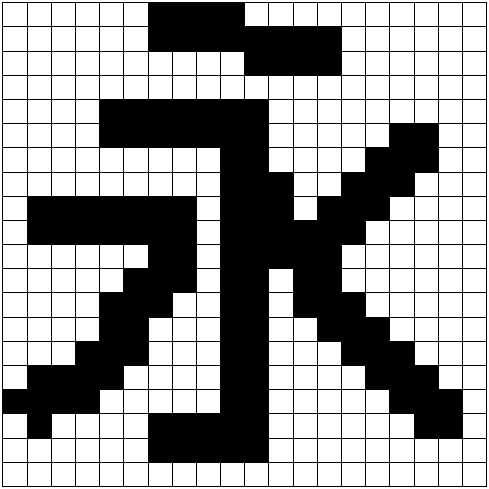
Bitmap fonts have character shapes in a dot pattern, and the lines that make up the characters are thinned out so that the characters do not look crushed even at small sizes.
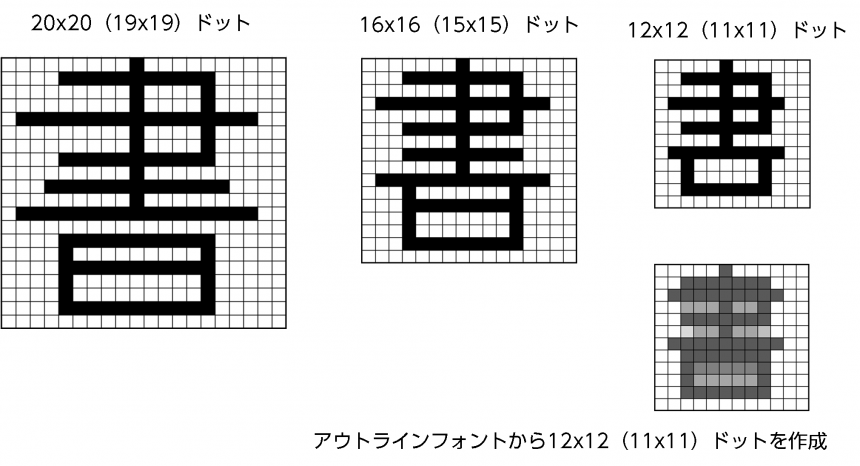
Body size and letter size
Bitmap fonts are expressed using dots, so the font notation (size notation) is unique.
The following is a bitmap font with a body size of 20x20 (letter size 19x19) dots.
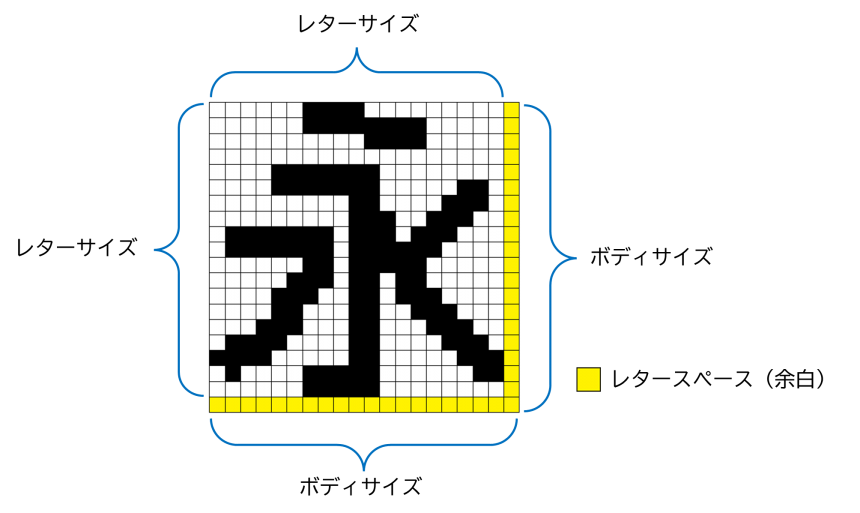
The size of the frame is called the body size, and the area with text information is called the letter size.
By having letter spaces, when outputting, there is no spacing between characters or lines, and characters will not stick together even if the data is lined up as is.
*Since it cannot be enlarged or reduced, you will need to prepare font data for each size you use.
At Morisawa, body size and letter size are listed in width x height order.
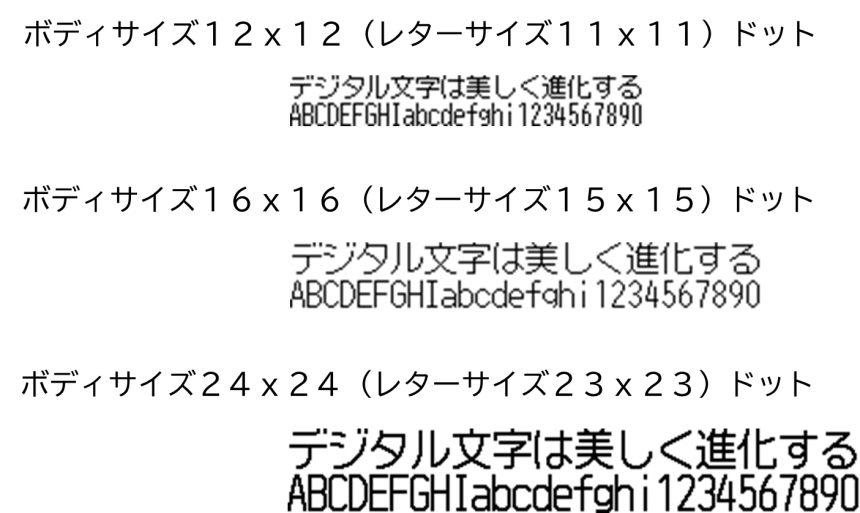
Monochrome and Grayscale Bitmap Fonts
Character shapes (dot patterns) created in two tones are called monochrome bitmap fonts, and those created in multiple tones (multi-tone) are called grayscale bitmap fonts.
Monochrome bitmap font (2-tone)
Bitmap fonts are expressed using background and character colors (two-tone), so the data volume is small, but because they do not have intermediate colors, the jagged edges of the characters are noticeable.
●Used in monochrome display devices, products with small ROM capacity, products with low resolution, etc.
Grayscale bitmap font (multi-tone: expressing color and brightness using multiple gradations)
As explained in the outline font section, bitmap fonts use anti-aliasing (gradually changing the background and text colors) to create smooth character outlines, and have a large data capacity.
●Used in color display devices and products where smooth text display is required in environments with low processing power
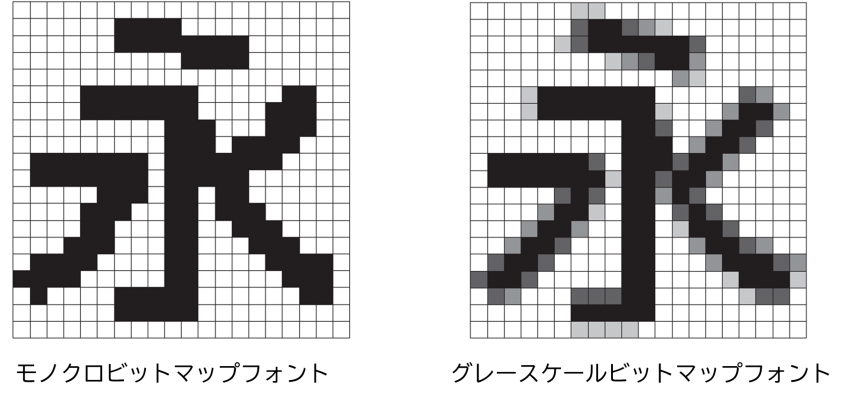
format
The most common bitmap font formats are:
| binary | A binary data format expressed only by 0 and 1 It can be processed directly by a computer, has a small data volume, and is the most standard format. |
| BDF | A data format for bitmap fonts established by Adobe The data is in text format, making it easy to understand. |
| WindowsBMP | A standard image data format used in Windows This format is also used for grayscale bitmap fonts, and the amount of data required is large. |
| TrueType Embed | TrueType data format containing only bitmap font data Bitmap fonts can be embedded in TrueType data (format). A bitmap font is called when you specify a set size (in points). [Reference] 12x12 (11x11) dot raw scan binary format dot pattern |
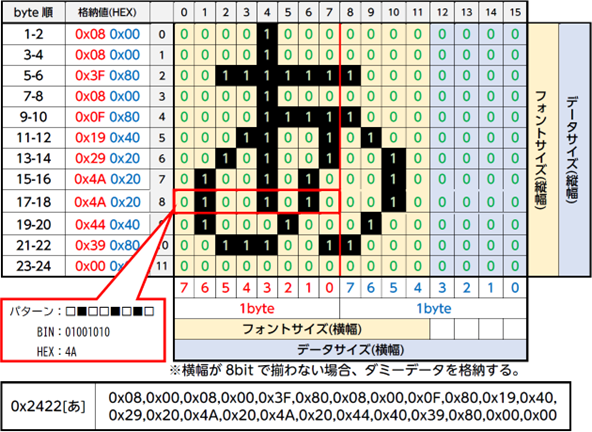
Morisawa can also handle formats other than those introduced above, so please feel free to contact us for more information.
*Depending on the specifications, it may be difficult to accommodate.
Main products used
Digital cameras, smart watches, printers, handheld terminals, electronic bulletin boards, medical and measuring equipment, various home appliances and industrial products
Data capacity
Bitmap fonts have a small data capacity and can be installed on devices with limited ROM capacity.
The following are typical data sizes:
Character set: Windows31J
Format: Binary
[Size: Data capacity]
| 12x12 (11x11) dots | : 279,552 Bytes |
| 16x16 (15x15) dots | : 372,736 Bytes |
| 20x20 (19x19) dots | : 701,440 Bytes |
| 24x24 (23x23) dots | : 841,728 Bytes |
| 28 x 28 (26 x 26) dots | : 1,304,576 Bytes |
| 32 x 32 (30 x 30) dots | : 1,490,944 Bytes |
Morisawa bitmap font size listhttps://www.morisawa.co.jp/products/fonts/embedding/bitmap/
When considering using bitmap fonts, please check the following:
■Usage environment
| Display panel gradation | [Example] 256 gradations |
| Display panel size | [Example] 2.5 inches |
| resolution | [Example] 240 pixels wide x 360 pixels high (dots) |
| Display size | [Example] 24 x 24 (23 x 23) dots *In the above example, 24 dots can display 15 lines with a maximum of 10 characters per line. |
| ROM capacity | [Example] 5MB (data storage capacity) *The required data capacity varies depending on monochrome or grayscale bitmap, size, character set and language. |
This concludes our explanation of bitmap fonts.
If you have any questions, please contact us directly by email.

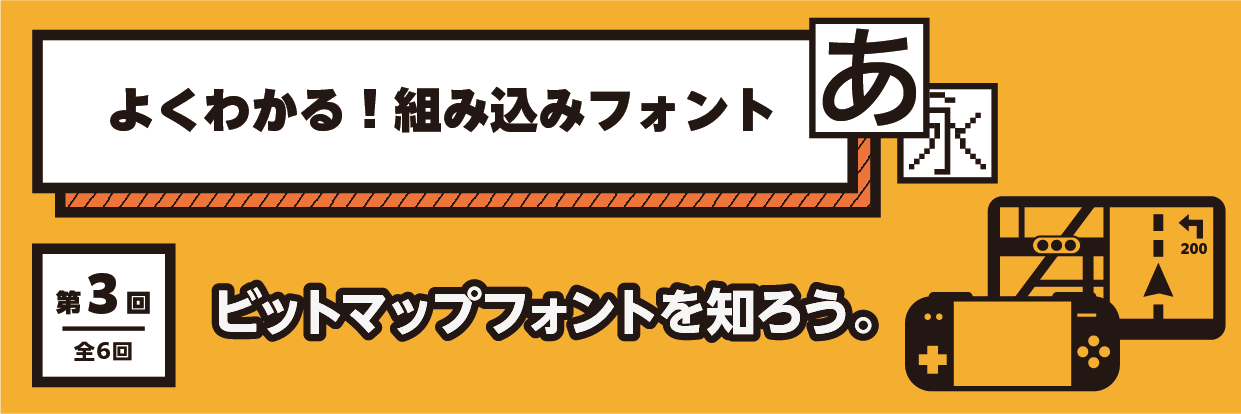
Contact
Morisawa Corporation Sales Innovation Department salesinnovation@morisawa.co.jp